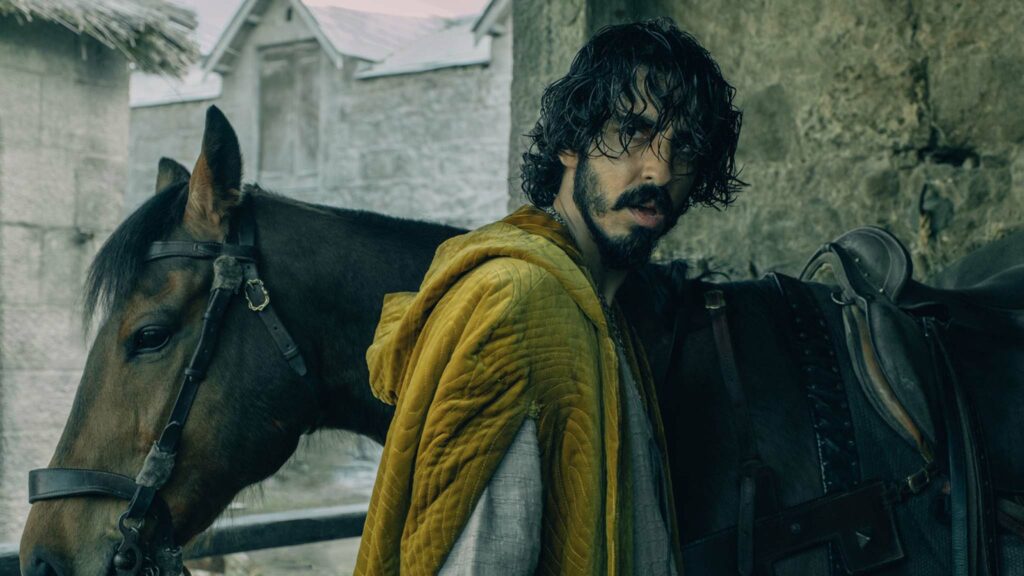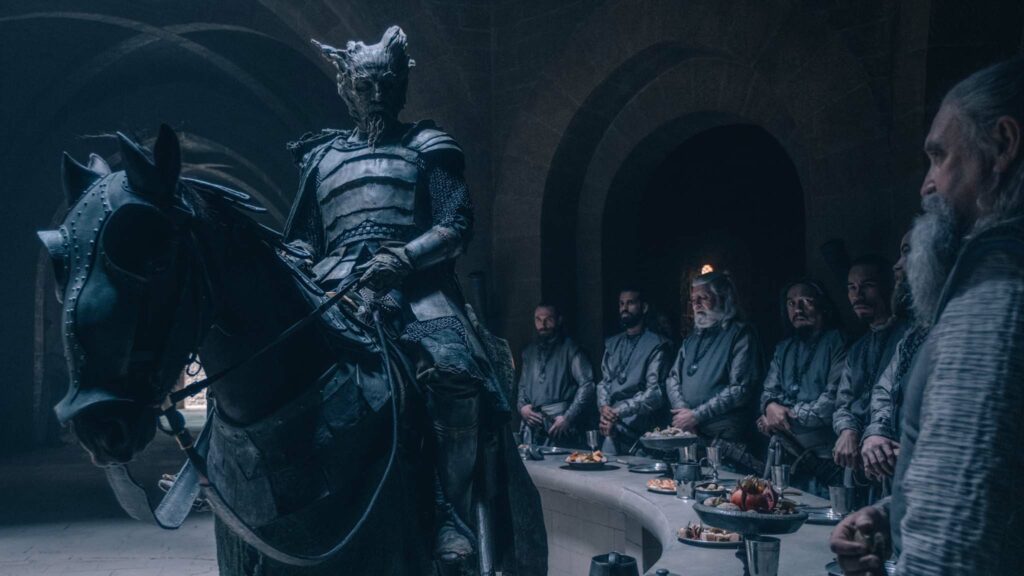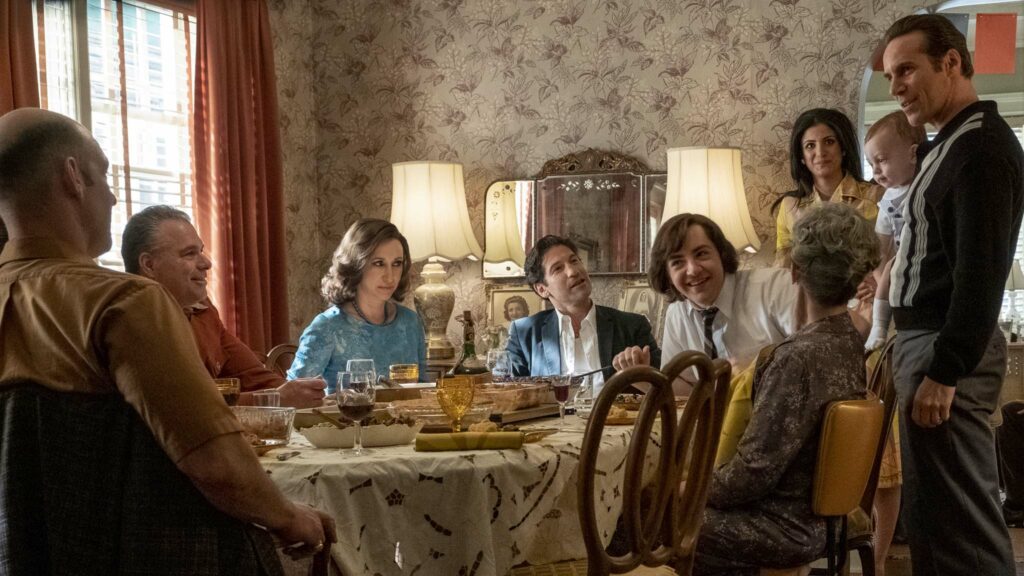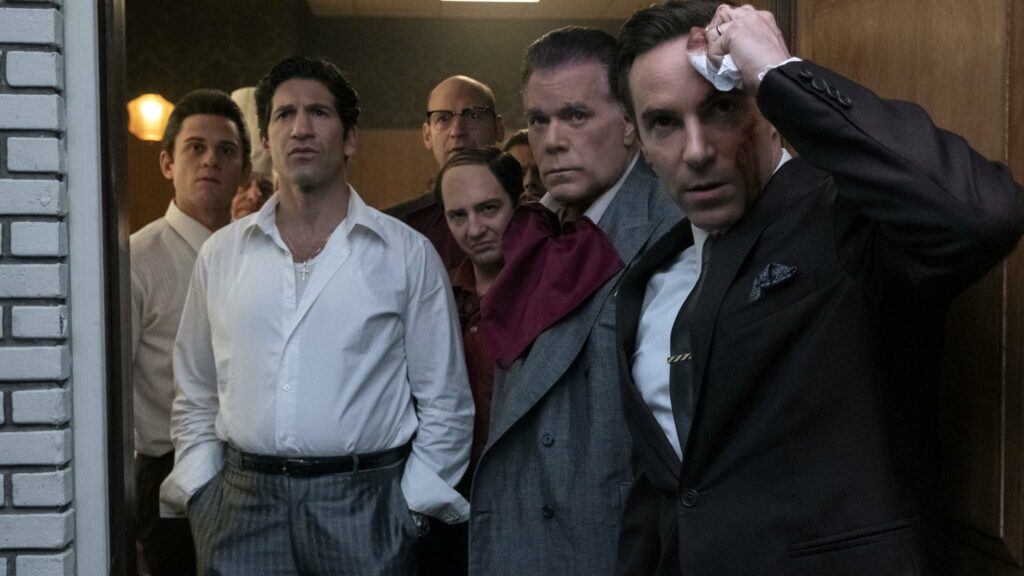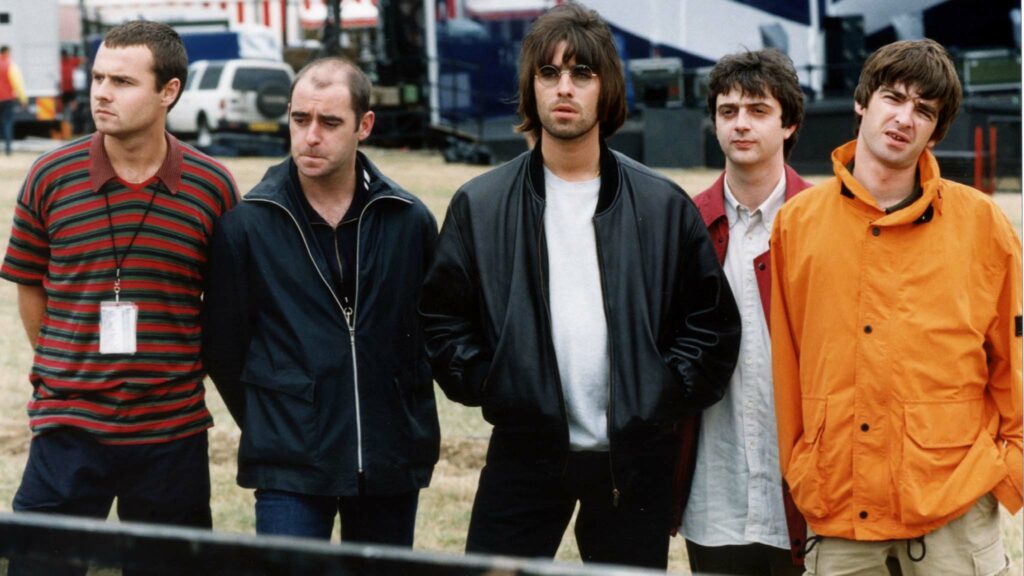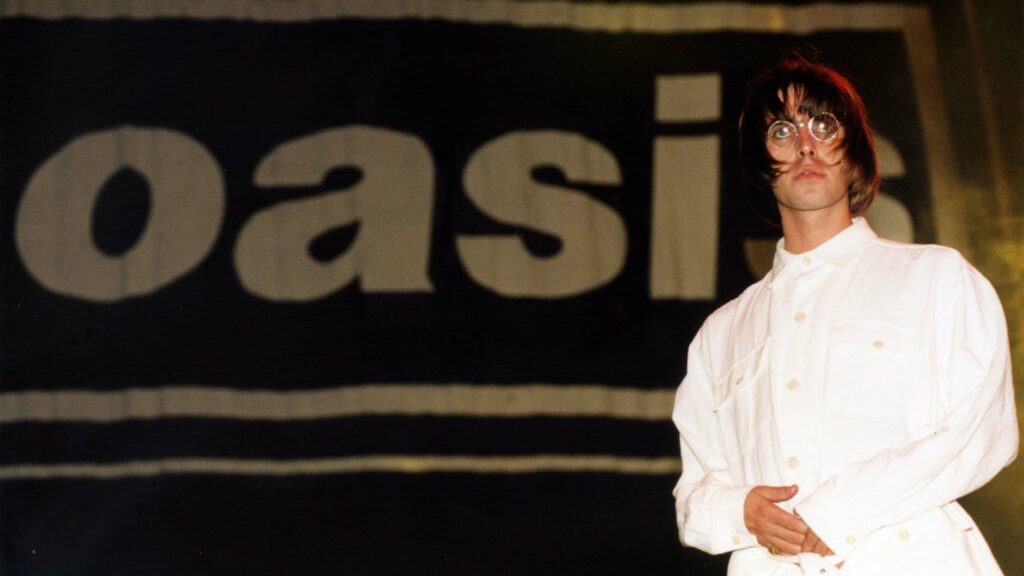Fantasy
The Green Knight (15)
Review: In one haunting sequence from writer-director David Lowery’s reinvention of the 14th-century alliterative poem Sir Gawain And The Green Knight, a seemingly benign character assists the eponymous adventurer then whispers under their breath, “Remember this dream, because it gets tricky”. Those menacing words, lost to a bitter wind that swirls over battlefields strewn with contorted bodies, are an understatement. Equal parts beautiful, beguiling and befuddling, The Green Knight is a fantastical odyssey torn from Arthurian legend that casts Dev Patel as a booze-soaked disappointment to himself, who yearns to be regarded in reverence by the rowdy royal court.
Lowery’s script bookmarks Gawain’s quest into chapters in keeping with chivalric storytelling tradition, incorporating key motifs from the 2,500-word poem, which was translated into English by JRR Tolkien. Cinematographer Andrew Droz Palermo canters side by side with the director, conjuring woozy, nightmarish encounters with a Lord (Joel Edgerton) and Lady (Alicia Vikander) and an opportunistic scavenger (Barry Keoghan) that echo the mournful tone of Lowery’s 2017 film, A Ghost Story. A talking fox and a tribe of eerie giants marauding through billowing mist, both rendered using digital trickery beyond the understanding of Merlin (Emmet O’Brien), linger tantalisingly in the memory when the meaning of some heavily stylised vignettes slips through our grasp.
An increasingly frail and weary King Arthur (Sean Harris) presides over the kingdom of Camelot with Queen Guinevere (Kate Dickie) as valiant knights tuck into a lavish Christmas feast assembled along the round table. The king beckons reckless nephew Sir Gawain (Patel) to approach his throne so they might become better acquainted. “Tell me a tale of thyself so I may know thee,” urges Arthur. “I have none to tell,” ruefully responds Gawain. “Yet…” Guinevere corrects him, foreshadowing a life-changing odyssey that is already in motion thanks to the pagan witchcraft of Gawain’s mother, Morgan le Fay (Sarita Choudhury), and her chanting coven.
A hulking emerald-skinned warrior on horseback gate-crashes the Yuletide festivities and issues a challenge. The Green Knight (Ralph Ineson) offers his axe as a prize to any man who can land a glancing blow in combat. The challenger must agree to receive a blow of comparable force and ferocity the following December. Gawain impetuously accepts and one year hence, the king’s nephew honours his promise, embarking on an epic six-day journey north to the Green Chapel.
Shot in Ireland, The Green Knight employs a wintry colour palette to send a chill down the spine almost as much as composer Daniel Hart’s otherworldly score. Patel is compelling as a young man gripped by self-doubt, who strives to be perfect and discovers that the strongest armour can’t protect him from life’s most devastating blows. Nor should it, because pain, regret and acceptance are necessary steps on the path to nobility.
Find The Green Knight in the cinemas
Drama
The Many Saints Of Newark (15)
Review: Pride comes before two falls – one horribly intentional, the other accidental – in the feature-length prequel to David Chase’s sprawling crime drama The Sopranos. Bruised egos and torn muscles set in motion the predictable events of The Many Saints Of Newark, which detonates racial tensions in 1960s New Jersey as a vivid backdrop to the awkward rites-of-passage of the series’ lead character, Anthony Soprano, played on the small screen by James Gandolfini. The actor’s son Michael portrays a socially awkward younger incarnation of the sociopathic mob boss in director Alan Taylor’s film, which punctuates a tangled tale of sibling rivalry and marital fidelity with graphic violence including a wince-inducing torture sequence using a car mechanic’s drill.
A script penned by series creator Chase and Lawrence Konner strains fraternal bonds like The Godfather and Goodfellas, nodding to the latter film’s wise guys by casting Ray Liotta as a hot-headed brute who expresses love through his fists. There are few concessions to audiences unfamiliar with the award-winning TV show. Screenwriters occasionally foreshadow devastation wrought by the Soprano clan like when Tony’s nephew Christopher Moltisanti, who appears briefly as a mewling infant here and will be choked to death by his uncle in adulthood, bawls when he stares into the eyes of teenage Tony. “I don’t know what it is. It’s like I scare him or something,” chuckles the adolescent Soprano.
Narrated from beyond the grave by Christopher, The Many Saints Of Newark opens with the DiMeo crime family led by Dickie Moltisanti (Alessandro Nivola) struggling to maintain a vice-like grip on the neighbourhood as black citizens loot stores and set streets ablaze in response to police brutality. Dickie’s loyal lieutenants Silvio Dante (John Magaro), Walnuts (Billy Magnussen) and Big Pussy (Samson Moeakiola) follow their boss’s lead as Harold McBrayer (Leslie Odom Jr), a small-time runner in the operation, ignites a turf war by setting up a rival numbers racket with his cousin Cyril (Germar Terrell Gardner).
Impressionable teenager Anthony Soprano (Gandolfini) idolises Dickie, more so than his father Johnny Boy (Jon Bernthal), who has just returned home to wife Livia (Vera Farmiga) after a four-year stretch behind bars. Tony watches intently as rival gangsters jostle for supremacy and blood ties are severed. Meanwhile, Dickie clashes with his father (Liotta) and secretly covets the old man’s 24-year-old Italian bride Giuseppina (Michela De Rossi).
The Many Saints Of Newark is a slow-burning multigenerational study of toxic masculinity and criminal enterprise with unsettling echoes of the Black Lives Matter protests. Gandolfini possesses some of his father’s mannerisms, tethering the two timelines as production designer Bob Shaw and costume designer Amy Westcott elegantly step back in time to an era of sharp suits and bouffant updos. Characters take tragic tumbles but Chase and Konner’s script maintains a solid footing.
Find The Many Saints Of Newark in the cinemas
Documentary
Oasis Knebworth 1996 (15)
Review: In August 1996, girl power was in full force with the Spice Girls zigazig ah-ing at the top of the UK charts, surfing a wave of Cool Britannia alongside Blur, Oasis, Pulp, Suede and contemporary artists Damien Hirst and Tracey Emin. Damon Albarn and the boys had drawn first blood in the tabloid-fuelled Battle of Britpop when their single Country House outsold Roll With It. However, Gallagher brothers Liam and Noel counter-punched by shifting over four million copies of (What’s The Story) Morning Glory? and triumphing at the Brit Awards.
To underline their popularity, Oasis announced two shows in the grounds of Knebworth House in Hertfordshire supported by The Prodigy, Manic Street Preachers, Ocean Colour Scene, The Chemical Brothers and The Charlatans. More than 2% of the UK population applied for tickets on May 11 1996 and all 250,000 sold out in less than a day, breaking UK box office records in a pre-internet golden age when eager fans had to queue outside record shops and ticket offices or dial a telephone booking number (invariably hitting redial for hours on end in response to the dreaded engaged tone).
Director Jake Scott’s nostalgic documentary relives the weekend of August 10 and 11 1996 through the eyes of fans, incorporating extensive concert footage captured over two nights by Dick Carruthers with previously unseen material and dramatic reconstructions of fans’ journeys. Their first-hand testimony can be hit and miss but the recollections of Madeleine Hamilton are poignant. Then 14 years old, she secured two tickets on a parent’s credit card and only attended because her brother – not an Oasis fan – agreed to chaperone. In the film, Hamilton describes the concert as one perfect moment with her beautiful older sibling before his cancer diagnosis.
Director Scott and editor Struan Clay largely resist the urge to meld concert performances across the two nights, opening Sunday’s performance with Noel’s off-quoted remark to the crowd: “This is history. Right here, right now.” Blissfully, there’s not a single mobile phone in the undulating crowd. Everyone is defiantly in the moment.
Don’t Look Back In Anger oscillates between Noel singing and Liam on the side of the stage, rudely gesticulating into a roving camera, while Stone Roses guitarist John Squire energises Champagne Supernova. The political backdrop to the gigs is largely forgotten from the moment “five lads from two different council estates in Manchester”, as Noel describes the band, launch into Columbia and Acquiesce.
Backstage footage of Liam canoodling with fiancee Patsy Kensit is a fleeting distraction from an impressive wall of sound that includes many of the hits, including a suitably rousing finale of Wonderwall. Today is gonna be the day that Scott’s film is gonna bring it all back to you.
Find Oasis Knebworth 1996 in the cinemas


